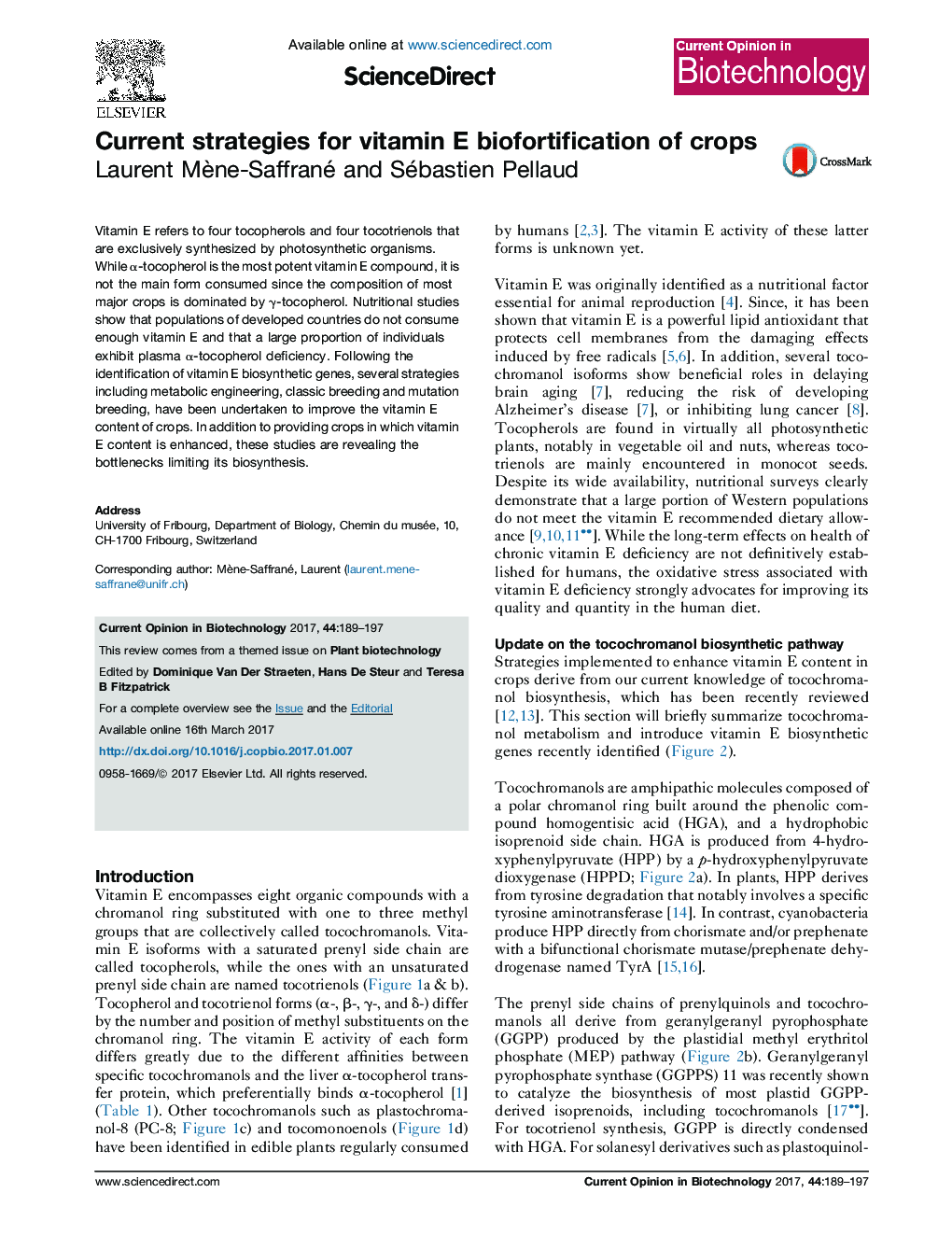| Article ID | Journal | Published Year | Pages | File Type |
|---|---|---|---|---|
| 6451580 | Current Opinion in Biotechnology | 2017 | 9 Pages |
â¢Vitamin E is an essential micronutrient for animals.â¢Western human populations exhibit chronic symptoms of vitamin E deficiency.â¢Vitamin E is produced exclusively by photosynthetic organisms such as plants.â¢19 genes related to vitamin E biosynthesis have been identified in plant genomes.â¢The γ-/α-tocopherol conversion strongly increases the vitamin activity of crops.
Vitamin E refers to four tocopherols and four tocotrienols that are exclusively synthesized by photosynthetic organisms. While α-tocopherol is the most potent vitamin E compound, it is not the main form consumed since the composition of most major crops is dominated by γ-tocopherol. Nutritional studies show that populations of developed countries do not consume enough vitamin E and that a large proportion of individuals exhibit plasma α-tocopherol deficiency. Following the identification of vitamin E biosynthetic genes, several strategies including metabolic engineering, classic breeding and mutation breeding, have been undertaken to improve the vitamin E content of crops. In addition to providing crops in which vitamin E content is enhanced, these studies are revealing the bottlenecks limiting its biosynthesis.
Graphical abstractDownload high-res image (187KB)Download full-size image
